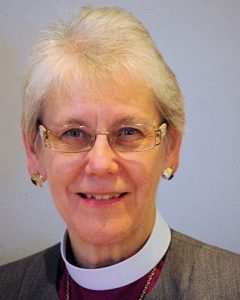
Seeing is a prominent theme in the stories and parables of Jesus. Although sometimes it is in the context of stories of the healing of physical blindness, it is also used as a metaphor for insight into truth. We read in the Gospel of John:
“And Jesus said, ‘For judgment I have come into this world, so that those who do not see may see, and those who see may become blind!’ Some of the Pharisees near Jesus heard this and said to him, “Surely we are not blind, are we?” Jesus said to them, “If you were blind, you would not have sin. But now that you say, ‘We see,’ your sin remains.” (John 9:39-41).
The Pharisees chose to expel the healed blind man (John 9) because they would not admit that Jesus’ gift of healing is from God. They chose to be blind to the grace in their midst rather than be open to something they did not expect.
My own life has been shaped by experiences that have invited—and sometimes forced—me to see what I initially could not. Living in another culture for five years repeatedly forced me to see the limiting attitudes and expectations forged in me by my Canadian upbringing. Whether it was in addressing my expectations of daily life or my attitudes to other faiths and cultural practices, I had to let go of quick judgements and privileged expectations and discover wisdom and beauty where I had not expected them.
I have a niece who is severely autistic. Her experience of the world around us is very different from mine. In order to connect with her and understand her minimal verbal cues I must suspend my expectations and see the complexity of the stimuli around her. I must try to see and hear as she does. When I do, there are moments of unexpected grace and joy.
For me, as a Christian, this practice of learning to “see” is a lifelong exercise of trying to see with the eyes of Jesus, as God sees, and letting go of—or expanding—the ways we have learned to see with the eyes of our time or culture, our class, privilege or gender.
We stand on the cusp of a new calendar year in the season of Epiphany, when we hear the stories of Jesus revealed in the world, and of how some—shepherds and wise men, Simeon and Anna—were able and willing to see the birth of Jesus as more than that of just another baby. In his ministry, Jesus would constantly challenge the disciples to see with eyes of compassion, justice and love—beyond class, age, gender or race. Women, children, Samaritans and gentiles, tax collectors and Zealots were all welcomed though the disciples, with the eyes of that time, would have kept them all at a distance.
What blindness in ourselves is being challenged as we look into this new year? We are being deeply challenged to understand how colonialism and racism have coloured and shaped our world view, our Church and our society. Indigenous Anglicans invite us to see the effects of the Indian Act; the intergenerational trauma of residential schools; and the loss of their language and culture. Transgender people invite us to see through their eyes the effects of the denigration of their identity and the call to respect the dignity of every human being. And there are many other appeals to our inner sight—even Creation itself, which is calling us to see the depth of its wounds.
Once we see, we cannot “unsee.” Then we must ask what we will do with what we now see differently. Will we follow Jesus on the path of compassion and justice, or will we join the Pharisees, whose claim of sight without compassion or justice is sin?


